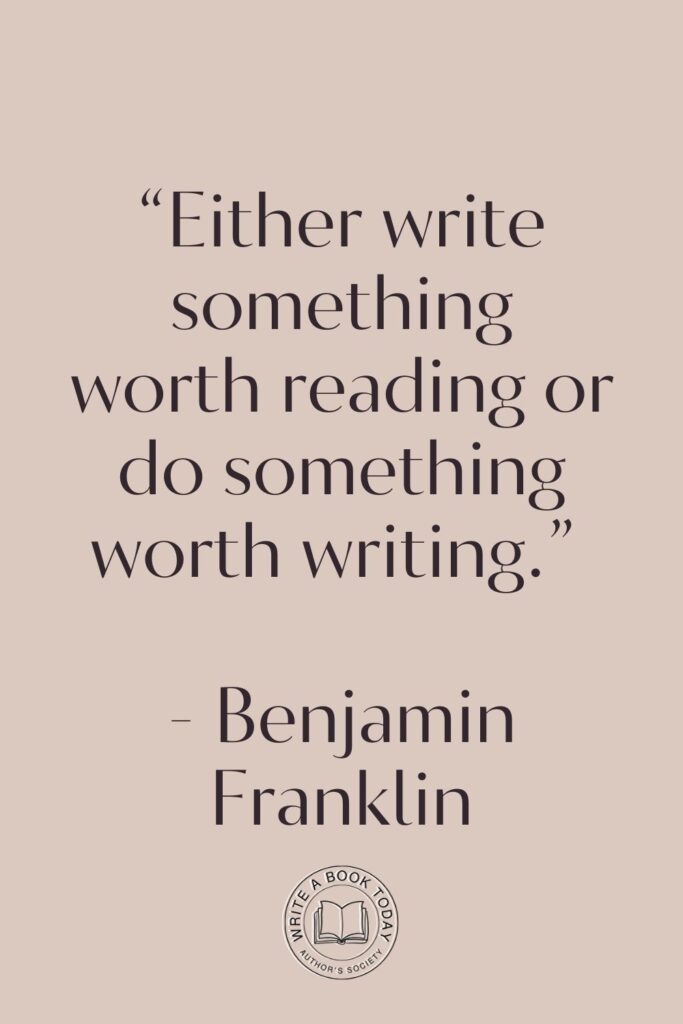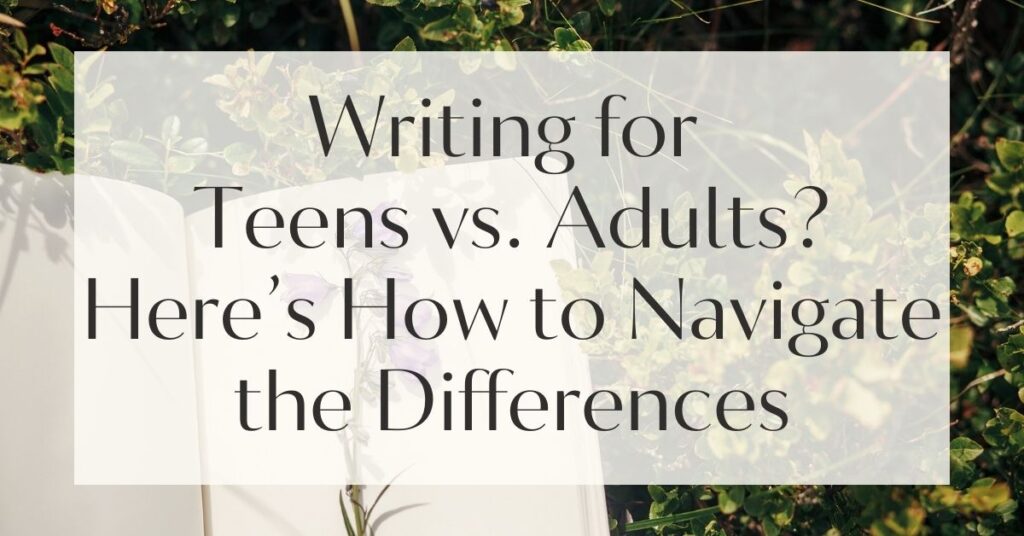Imagine standing on a bridge, looking at two distinct worlds on either side. On one side, vibrant, dynamic, and ever-evolving teen culture; on the other, the complex, nuanced realm of adulthood.
How do you connect these two worlds through your writing? Understanding the nuances of writing for teens and adults can be both an art and a science, demanding sensitivity, insight, and creativity.
This blog post will unravel the mysteries of audience engagement, focusing on content preferences and psychological development, helping you tailor your approach effectively.
Understanding the Audience: Who Are Teens and Adults?
Before diving into writing techniques, it’s crucial to grasp the essence of your audience. Teens and adults, though often lumped together in discussions, represent vastly different demographic groups with unique characteristics and psychological profiles.
Demographics and Characteristics
Teens, typically ranging from ages 13 to 19, are in a phase of self-discovery. They are driven by curiosity, influenced by peers, and immersed in technology. Their world is a whirlwind of social media trends, school pressures, and identity exploration.
In contrast, adults, spanning ages 20 and beyond, are more likely to be settled in their identities, though still navigating life’s complexities. They juggle responsibilities like careers, relationships, and personal growth, seeking content that resonates with their experiences and aspirations.
To illustrate these differences, consider the following table, which highlights key demographic traits of teens and adults:
| Attribute | Teens | Adults |
|---|---|---|
| Age Range | 13-19 years | 20+ years |
| Main Interests | Social media, trends, self-discovery | Career, family, personal development |
| Communication Style | Informal, trendy | Varied, more formal |
Psychological Development Stages
Understanding psychological development stages is essential in crafting content that resonates with each group. Teens are in a stage of cognitive and emotional growth. Their brains are still developing, particularly in areas responsible for decision-making and risk assessment.
This makes them more open to new experiences but also more susceptible to peer influence. Adults, however, tend to have more developed critical thinking skills and a deeper understanding of consequences, making them more discerning in their content consumption.
To effectively write for teens, focus on themes of exploration and identity. Incorporate relatable scenarios that reflect their daily challenges and aspirations.
Engage them with interactive elements like quizzes or polls that allow them to express their opinions. This approach not only captivates their interest but also fosters a sense of connection and relevance.
The Key Differences in Writing Styles
The art of writing lies in the subtleties of tone, language, and theme. These elements must be carefully tailored to suit the distinct tastes of teens and adults. Recognizing these differences is key to effective audience engagement.

Tone and Language Choices
When writing for teens and adults, the choice of tone and language can make or break your connection with the reader. Teens often respond well to informal, conversational tones peppered with current slang or cultural references. This style mirrors their everyday communication and makes the content feel accessible and engaging.
Conversely, adults may prefer a more polished and nuanced tone, reflecting the complexity of their experiences. However, this doesn’t mean that adult writing should be devoid of personality; a warm, conversational style can still be effective if balanced with professionalism.
Experiment with tone and language by creating character dialogues. This exercise helps in understanding how different age groups communicate. Pay attention to vocabulary, sentence structure, and cultural references.
By doing so, you can fine-tune your writing to better align with your audience’s expectations.
Content Preferences and Themes
Content preferences also vary significantly between teens and adults. Teens are drawn to themes of adventure, romance, and self-discovery, often favoring stories with fast-paced plots and relatable characters.
Adults, on the other hand, may seek content that delves into complex issues such as personal growth, societal challenges, and philosophical questions. This difference is not just about age; it’s about life stages and the priorities that come with them.
- Teens enjoy stories that reflect their personal struggles and victories.
- Adults appreciate narratives that offer insight into human nature and societal dynamics.
- Both groups value authenticity and relatability in storytelling.
Feeling lost with your debut novel?
Fiverr Pro connects you with expert editors, designers, and marketers – everything you need to get your book ready for success!

Engaging Teens: Strategies for Success
Capturing the attention of teens requires a unique approach that taps into their world. By understanding their interests and communication styles, writers can craft content that resonates deeply with this audience.
Utilizing Relatable Characters and Scenarios
One of the most effective ways to engage teens is through characters and scenarios they can see themselves in. This involves creating protagonists who face similar challenges, such as navigating friendships, handling school pressures, or exploring their identities.
When teens see themselves reflected in stories, it fosters a sense of connection and validation, making the content more impactful and memorable.
Consider incorporating scenarios that mirror real-life situations teens encounter. Whether it’s a story about overcoming bullying or finding one’s passion, these narratives can offer both entertainment and guidance.
By weaving in elements of humor and authenticity, writers can create compelling stories that not only captivate but also inspire teens to reflect on their own experiences.
Incorporating Humor and Pop Culture References
Humor is a powerful tool in capturing the teen audience. It breaks down barriers, making content more approachable and enjoyable. Teens appreciate clever wordplay, witty banter, and situations that evoke laughter.
Additionally, integrating pop culture references—whether it’s a nod to the latest TikTok trend or a mention of a popular music artist—can make your content feel current and relevant, showing that you’re in tune with their world.
When using pop culture references, ensure they enhance rather than overshadow your main message. It’s important to strike a balance where the reference adds value without alienating readers unfamiliar with the trend. This approach keeps the content engaging while maintaining its broader appeal.

Captivating Adults: Tailoring Your Approach
Writing for adults demands a nuanced approach that respects their diverse experiences and sophisticated tastes. By addressing their complex realities, writers can create content that resonates on a deeper level.
Addressing Complex Themes and Issues
Adults often seek content that challenges their perspectives and expands their understanding of the world. This includes exploring themes such as ethical dilemmas, societal changes, and personal transformation. By tackling these subjects, writers can stimulate intellectual curiosity and engage readers in meaningful conversations.
Consider weaving in real-world examples and case studies to support your arguments. This not only lends credibility to your content but also provides readers with practical insights they can apply to their own lives. A thoughtful analysis of complex themes encourages readers to reflect on their beliefs and experiences, fostering a deeper connection with the material.
Google Docs is for notes. Scrivener is for novels. Upgrade your writing game and try it for free today!

Balancing Informative Content with Personal Anecdotes
While adults value informative content, personal anecdotes can add warmth and relatability to your writing. Sharing personal stories allows readers to see the human side of the writer, making the content more engaging and memorable.
These anecdotes can serve as a bridge between abstract concepts and real-life applications, helping readers relate to the material on a personal level.
For instance, when discussing a topic like work-life balance, sharing a personal experience of juggling career and family responsibilities can provide valuable insights. This approach not only enriches the content but also establishes a rapport with readers, encouraging them to share their own stories and perspectives.
Finding Common Ground: Bridging the Gap
Despite the differences between teens and adults, there are universal themes that resonate with both audiences. By identifying these commonalities, writers can create content that appeals to a broader readership.
Universal Themes That Resonate with Both Audiences
Certain themes, such as love, friendship, and personal growth, transcend age barriers and speak to the human experience. These universal concepts can be explored in ways that cater to both teens and adults, offering insights that are relevant and relatable to all.
For example, a story about overcoming adversity can be tailored to resonate with both teens facing academic challenges and adults dealing with career setbacks. By focusing on the core emotions and lessons within these themes, writers can craft narratives that unite readers across generations.
Encouraging Dialogue and Reflection
Writing that invites dialogue and reflection can foster a sense of community among readers.
By posing rhetorical questions or prompting discussions, writers can encourage readers to engage with the content and share their own perspectives. This interactive approach not only enhances audience engagement but also creates a space for diverse voices and ideas to be heard.
Consider ending your articles with open-ended questions that invite readers to ponder their own experiences and insights. This not only reinforces the content’s message but also encourages readers to actively participate in the conversation, fostering a sense of connection and shared understanding.
Practical Tips for Writers: Adapting Your Style
As a writer, honing your ability to adapt your style to different audiences is a valuable skill. By experimenting with various techniques and approaches, you can discover what resonates best with your readers.

Researching Audience Preferences
Understanding your audience’s preferences is crucial for crafting effective content. Conducting research through surveys, interviews, or social media analysis can provide valuable insights into what your readers enjoy and seek in their reading material.
This information can guide your content creation process, ensuring that your writing aligns with your audience’s interests and expectations.
Consider utilizing tools like Google Trends or social media analytics to identify popular topics and emerging trends. By staying informed about your audience’s preferences, you can tailor your content to address their needs and capture their attention effectively.
Experimenting with Different Narratives
Experimentation is key to discovering your unique writing style. By exploring different narrative techniques, such as first-person storytelling or multiple perspectives, you can find the approach that resonates most with your audience.
This creative exploration allows you to push the boundaries of your writing and develop a distinctive voice that sets you apart.
Try writing short stories or essays in various styles to see what feels most authentic to you. Share your work with trusted peers or mentors for feedback. This iterative process helps refine your style and build confidence in your ability to engage diverse audiences.
No marketing platform? No social following? No problem!
Publisher Rocket helps you market your debut novel like a pro.
It’s a gamechanger for debut authors – try it today!


Empathy in Writing: Connecting with Your Readers
Empathy is a powerful tool in writing, enabling you to connect with your readers on a deeper level. By understanding and addressing their emotional needs, you can create content that resonates and inspires.
Understanding Emotional Needs
Both teens and adults have unique emotional needs that influence their content preferences. Teens often seek validation, belonging, and guidance as they navigate the challenges of adolescence. Adults, on the other hand, may look for content that provides reassurance, inspiration, and practical solutions to life’s complexities.
By acknowledging these emotional needs, writers can craft content that speaks to the heart and soul of their readers. This empathetic approach fosters trust and connection, making your writing more impactful and memorable.
The Role of Rhetorical Questions in Engagement
Rhetorical questions are a powerful tool for engaging readers and prompting reflection. By posing thought-provoking questions, writers can encourage readers to pause and consider their own perspectives and experiences. This interactive approach not only enhances engagement but also deepens the reader’s connection to the content.
Consider using rhetorical questions strategically throughout your writing to invite readers into a dialogue. This technique fosters a sense of curiosity and introspection, encouraging readers to explore new ideas and perspectives.
In conclusion, mastering the art of writing for teens and adults requires a nuanced understanding of audience engagement, content preferences, and psychological development.
By tailoring your approach to meet the unique needs of each group, you can create content that resonates deeply and inspires meaningful connections. Embrace the journey of exploring different styles and techniques, and remember that empathy and authenticity are key to captivating readers across generations.








